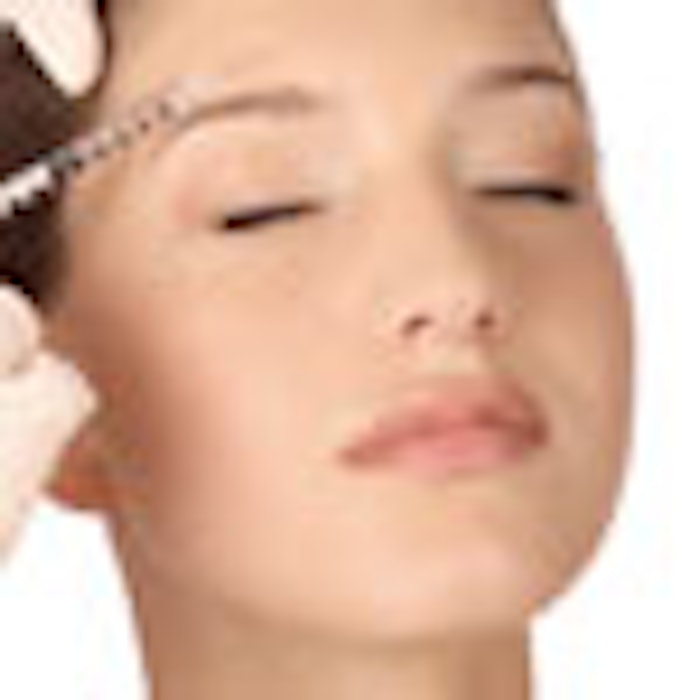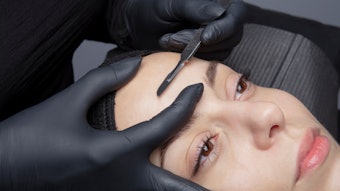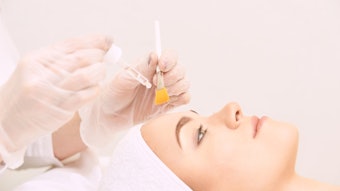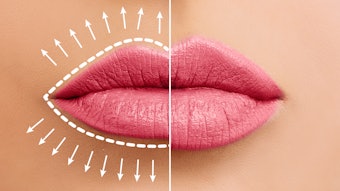
Following this news items are tips from Terri Wojak, director of True University and True Skin Care Center in Chicago, about how skin care professionals can best work with technologies such as Botox in their facility. Terri is the author of Aesthetics Exposed: Mastering Skin Care in a Medical Setting and Beyond.
According to Allergan, Inc., April 15, 2012, was the 10-year anniversary of the U.S. Food and Drug Administration (FDA) approval of Botox Cosmetic (onabotulinumtoxinA) to improve the look of moderate to severe frown lines between the eyebrows in patients age 18–65.
“When approved by the FDA in 2002, Botox Cosmetic changed the way that physicians could treat patients who were interested in improving the appearance of their vertical frown lines between the brows,” says David E.I. Pyott, chairman of the board, president and CEO, Allergan, Inc. “Botox Cosmetic has become the No. 1 neuromodulator in the United States and the number of patients considering talking to their doctor about treatment has more than quadrupled to 5.8 million since 2002.”
Botox secured its first FDA approval more than 22 years ago as a treatment for two rare eye muscle disorders, making it the first product of its kind approved in the world. In 2002, the same formulation with dosing specific to frown lines was approved under the name Botox Cosmetic.
“The FDA approval of Botox Cosmetic enhanced the practice of plastic surgery by providing plastic surgeons with a new treatment option for patients seeking to reduce the appearance of vertical frown lines between the eyebrows,” says Malcolm Z. Roth, MD, president of the American Society of Plastic Surgeons.
In the decade since Botox Cosmetic was approved, aesthetic specialty physicians--which include dermatologists, oculoplastic surgeons and facial plastic surgeons--have developed extensive experience in the art and science of administering Botox Cosmetic to yield predictable results for their patients. These physicians have performed approximately 11 million treatment sessions since 2002 and have also contributed to the extensive clinical database demonstrating the safety and efficacy of the drug.
“The approval of Botox Cosmetic in 2002 dramatically changed our ability to treat our patients by giving them an effective option to treat the appearance of moderate to severe vertical frown lines with a minimally invasive procedure,” says Susan Weinkle, MD, president of the American Society for Dermatologic Surgery. “Botox Cosmetic has become more accepted by the public, and this treatment has brought more patients into aesthetic practices to learn about other treatments available.”
Advice from Terri Wojak about how skin care professionals can best work with technologies such as Botox in their facility.
"Estheticians working in a medical office frequently encounter clients who have received Botox. When Botox first came to the market for cosmetic use, many estheticians were worried about it taking away from their business. In the past 10 years, many have come to realize that medical providers administering Botox can be a great source for esthetic business. If well-educated medical providers and estheticians work together, the Botox user can achieve optimal results through the addition of skin care.
There are many things the esthetician can do that work in conjunction Botox. First of all, Botox offers something that esthetician’s cannot provide. It temporarily improves the look of moderate to severe frown lines between the eyebrows when injected into the muscle. Therefore, it temporarily stops the ability of lines and wrinkles to deepen while providing a smoother, softer look to the skin. The best results are achieved when the skin itself is in good condition; this happens through regular exfoliation, hydration and stimulating cell renewal. Education is of the utmost importance when any product comes into the aesthetic field. Learning what a product like Botox does and how it works gives the esthetician the ability to enhance these procedures instead of competing with them.










